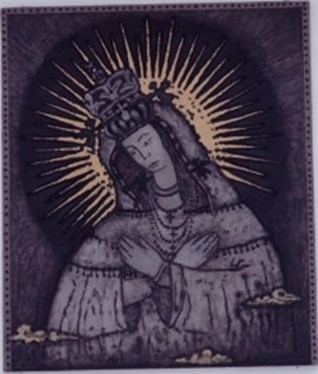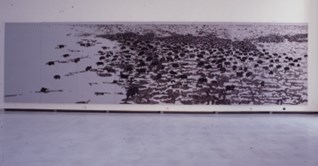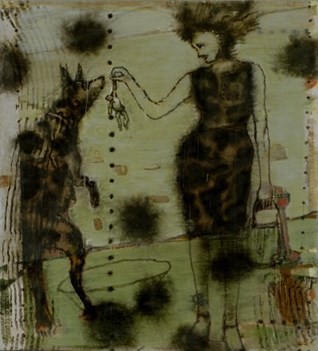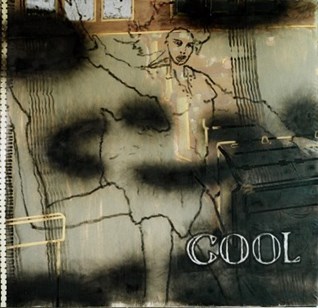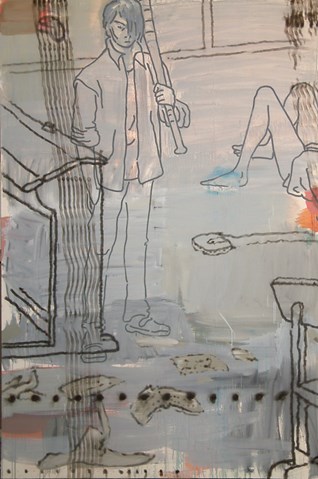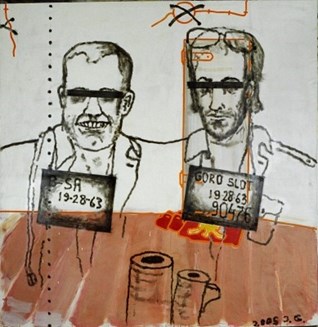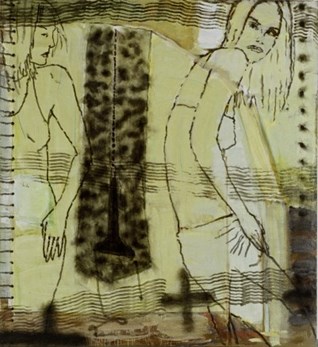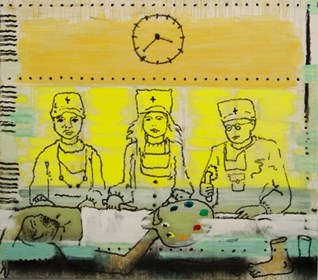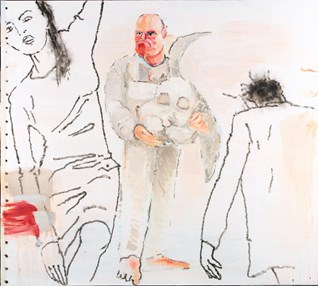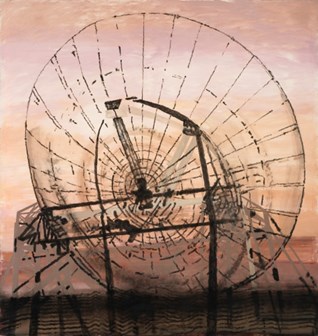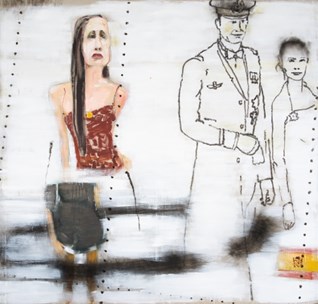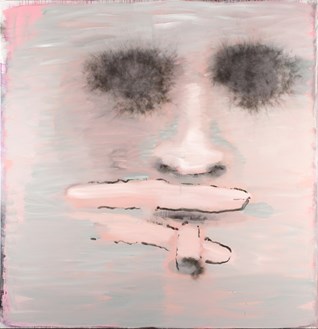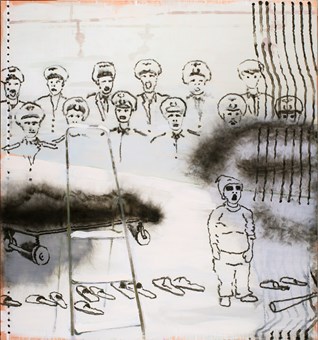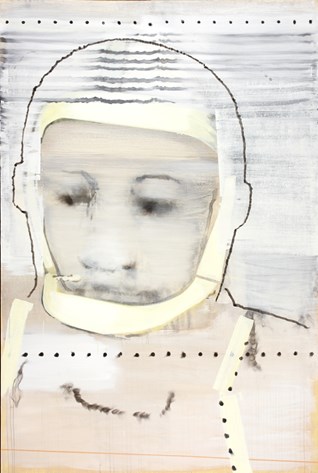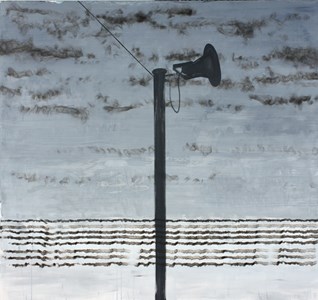"The character holding a hare's head is treated as an icon of prolificacy. The most vital ones are the dulliest ones." J. Gasiūnas
"The painting is about limited human knowledge. There is no real radar, but smoke. This work was on display at the Lithuanian Embassy in Warsaw during the anti-war demonstrations against the plans of building radars in Poland. The work in a way predicted the absurdity of the military shield, even though no such coincidences were predicted at the stage of conceiving the work. This turn of events nevertheless has expanded social implications of the work." J. Gasiūnas
"The painting features a structure of a head that uncloses the shell of the skull. Scorched eyes of the character do look, but do not see. The deeper experience does not guarantee the superior cognition. The observer him/herself should search out the parallel to the drama "Faust" by Johann Wolfgang von Goethe." J. Gasiūnas
"The painting shows the artist haunted by his past. He feels tortured by the past therefore the plot is transformed into a comic strip." J. Gasiūnas
"This painting illustrates the impossibility of communication - even though the character in the painting wants to speak. The brush marks in the painting have a semblance of medical bandage. This way the artist presents his character as a cosmic infection. Is it worth while to conquer the universe and transmit all the symptoms of civilization - depression, indifference, miscommunications?" J. Gasiūnas
"This work demonstrates what remains of the memories of the past. There is nothing real in it. The sky of the landscape is drawn in smoke. The smoke line marking the horizon is transformed into a bar code. The image of a pole with a loudspeaker attached to it against the backdrop of a polar night evokes totalitarian times. But the wire feeding the loudspeaker travels to the sky. The absurd situation conjured up in the painting is to prove that the recently-ended epoch is withdrawing. But these days may as well come back." J. Gasiūnas



